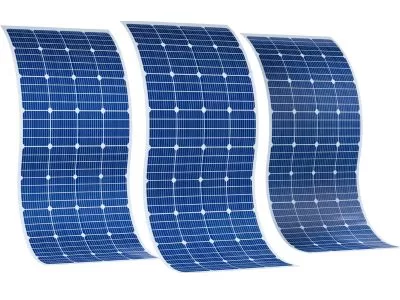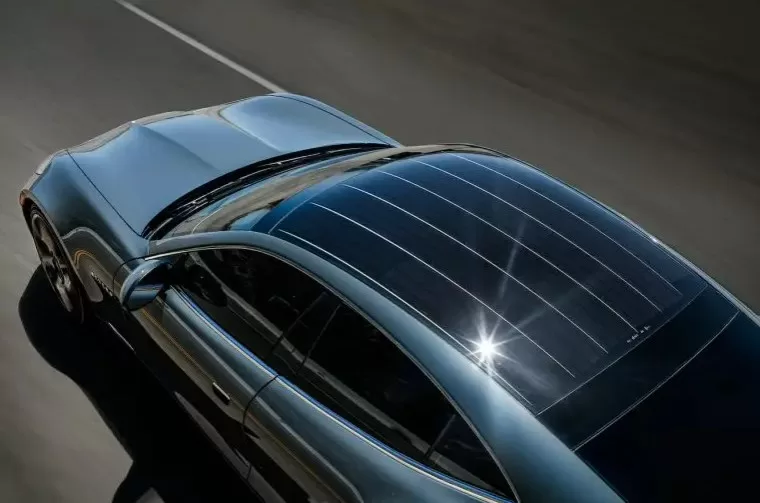Solar power has revolutionized the way we think about energy. Harnessing the power of the sun has become increasingly popular and accessible with the introduction of flexible solar panels. They offer a lightweight, versatile solution for renewable energy. They easily power homes, boats, and cars. In this article, we’ll explore their benefits, applications, and how they work.
What are flexible solar panels?
Flexible solar panels, a type of photovoltaic panel, consist of lightweight and flexible materials. Unlike traditional rigid solar panels, they are thin and bendable, which makes them perfect for applications where weight and space are at a premium. Manufacturers often use thin-film technology to create them in various sizes and shapes, enabling integration into numerous products.

How do flexible solar panels work?
Flexible solar panels work in the same way as traditional solar panels, by harnessing the energy from the sun and converting it into usable electricity. The photovoltaic cells in the panel capture the energy from the sun and convert it into direct current (DC) electricity. The electricity then goes through an inverter, converting it into alternating current (AC) electricity, suitable for powering appliances.
Benefits of flexible solar panels
There are many benefits to using flexible solar panels, including:
- Lightweight and portable:They are much lighter than traditional solar panels, which makes them easier to transport and install. They are perfect for use on boats, RVs, and other mobile applications.
- Space-saving: These panels’ thin and flexible design requires less space than traditional solar panels, making them ideal for limited-space applications.
- Versatile: This type of panels serve various purposes, from powering homes and boats to charging electronic devices.
- Durable: The materials used to make flexible solar panels are durable and weather-resistant, making them ideal for use in harsh environments.
Types of flexible solar panels
There are several types of flexible solar panels available, including:
Thin-film solar panels: As the most common flexible solar panel type, they consist of a thin photovoltaic material layer on a flexible substrate. They are lightweight and easy to install, but they are less efficient than traditional solar panels. Read More
Amorphous silicon solar panels: Manufacturers create these panels with a thin layer of amorphous silicon on a flexible substrate. They are slightly more efficient than thin-film solar panels, but they are also more expensive.
Organic solar panels: These panels consist of organic photovoltaic materials on a flexible substrate. They are still in the early stages of development, but they have the potential to be more efficient and cost-effective than other types of flexible solar panels.
Applications of flexible solar panels
These type of panels have many applications, including:
Powering homes: They can power homes, particularly where grid power is unavailable.
Charging electronic devices: Portable flexible solar panels can charge devices like smartphones and laptops on the go.
Boats and RVs: Lightweight, portable flexible solar panels are perfect for powering boats and RVs and can be easily installed on the vehicle’s roof.
Streetlights: These type of panels can power streetlights, reducing energy costs and enhancing energy efficiency in urban areas.
Wearable technology: They can power wearable tech like smartwatches and fitness trackers, increasing energy efficiency and reducing charging frequency.

Factors to consider when choosing flexible solar panels
When choosing flexible solar panels, there are several factors to consider, including:
- Efficiency: The efficiency of a solar panel refers to the amount of sunlight it can convert into usable electricity. Look for panels with high efficiency ratings for better performance.
- Durability: Choose them made of durable, weather-resistant materials for longevity.
- Size and shape: Assess the panel’s size, shape, and flexibility to ensure a proper fit and functionality in your application
- Cost: They can vary in price, so it’s important to consider your budget when choosing a panel.
Installation of flexible solar panels
You can easily install them on various surfaces, including curved and uneven ones, by gluing or screwing them in place or using magnetic options. Carefully follow the manufacturer’s instructions during installation to ensure correct and safe placement.
Maintenance of flexible solar panels
They require very little maintenance, but it’s important to keep them clean and free from debris to ensure maximum efficiency. They can be cleaned with a soft cloth and mild detergent, and any damaged panels should be replaced immediately.
Frequently asked questions (FAQs)
How long do flexible solar panels last?
These types of solar panels can last up to 25 years or more with proper maintenance.
Do flexible solar panels work in extreme weather conditions?
Yes, they can endure harsh weather conditions, such as high winds and heavy rain.
Is it possible to repair damaged flexible solar panels?
Most of the time, you cannot repair damaged flexible solar panels and should replace them.
Are flexible solar panels more expensive than traditional solar panels?
These panels can be more expensive than traditional solar panels, but they are often more versatile and easier to install.
How much energy can a flexible solar panel generate?
The amount of energy a flexible solar panel can generate depends on several factors, including its efficiency and the amount of sunlight it receives.
Conclusion
Flexible solar panels have opened up a new world of possibilities for renewable energy, making it easier than ever to harness the power of the sun. These lightweight and versatile panels can be used in a wide range of applications, from powering homes and boats to charging electronic devices. By considering the factors discussed in this article, you can choose the right flexible solar panel for your needs and help make the world a greener place.